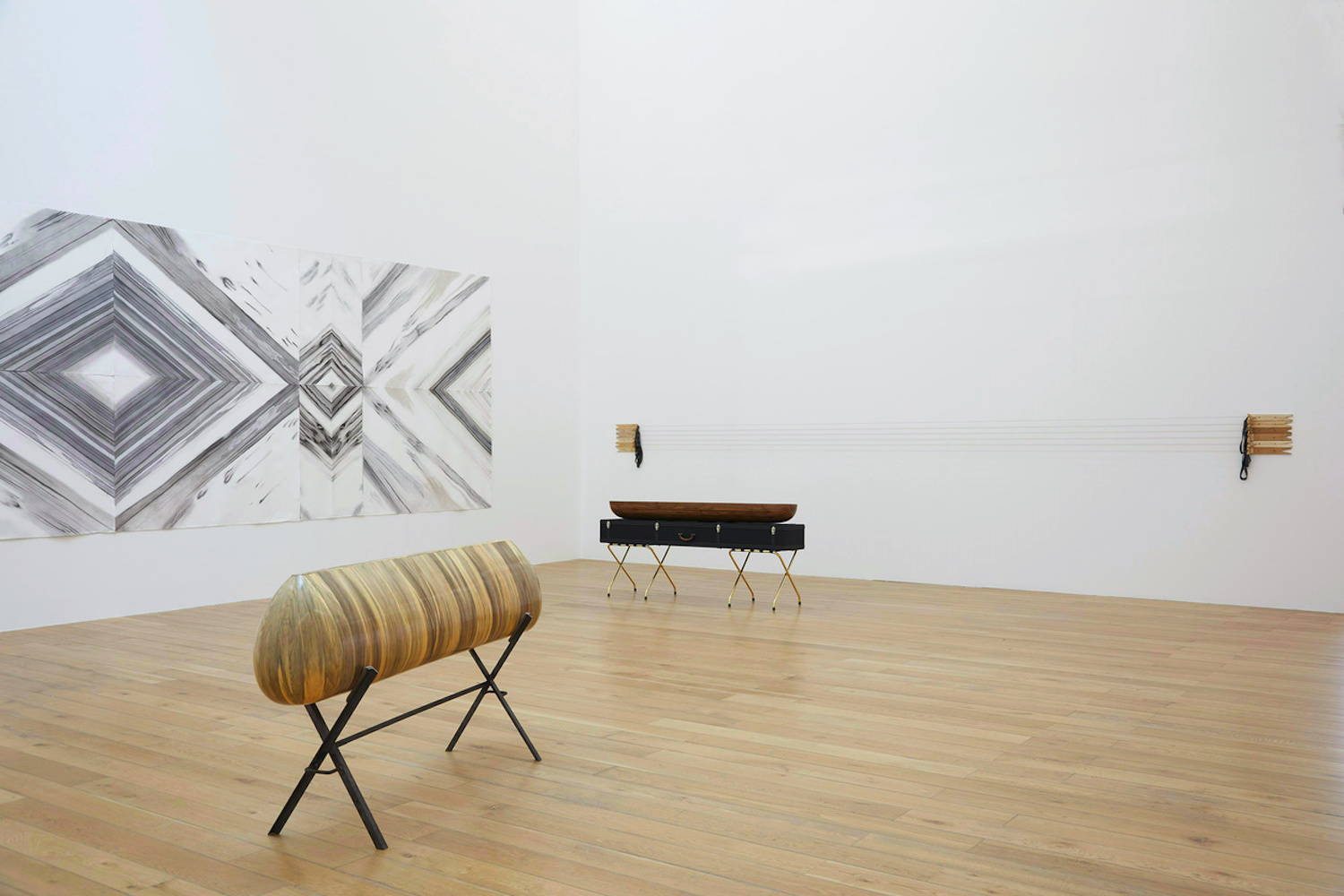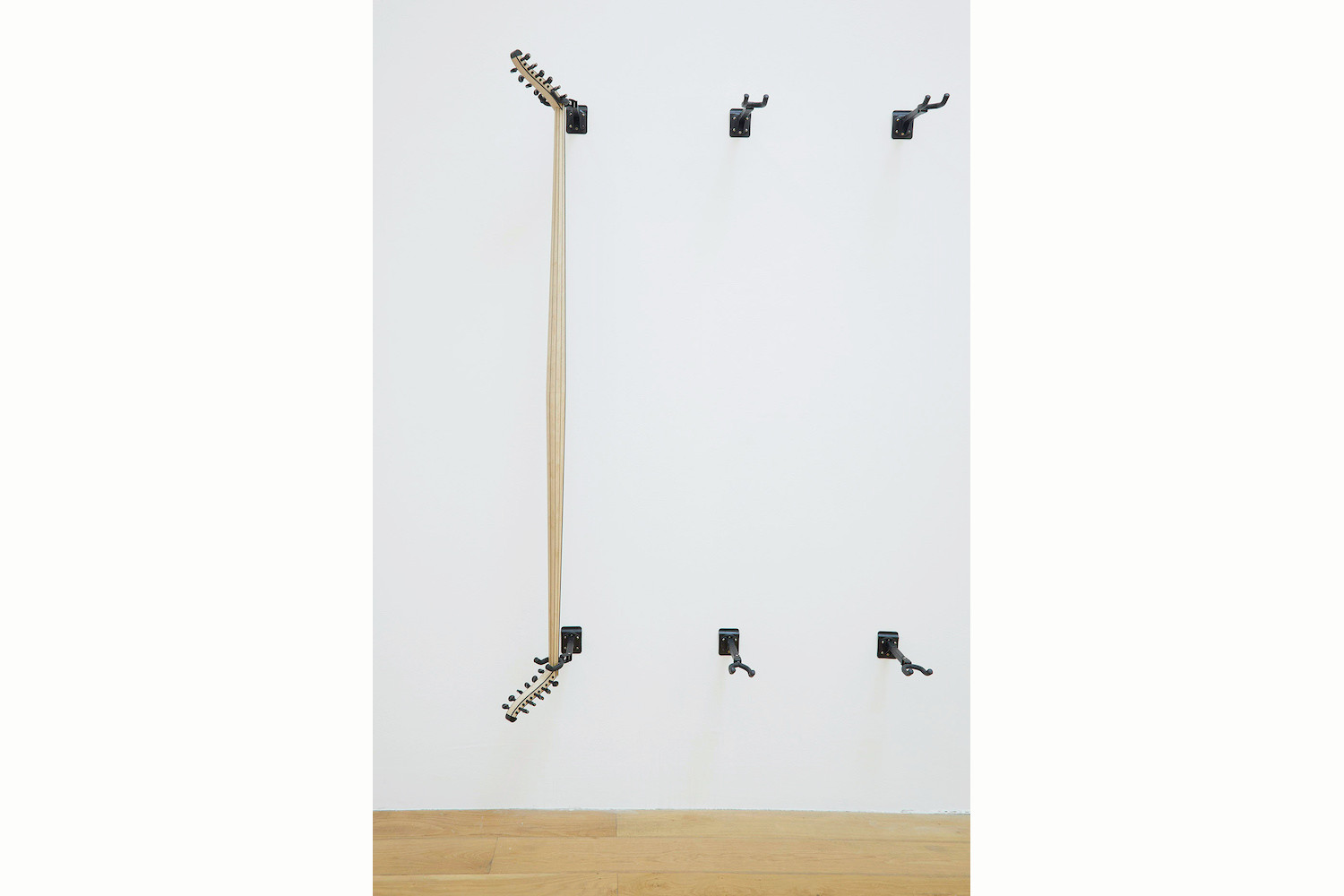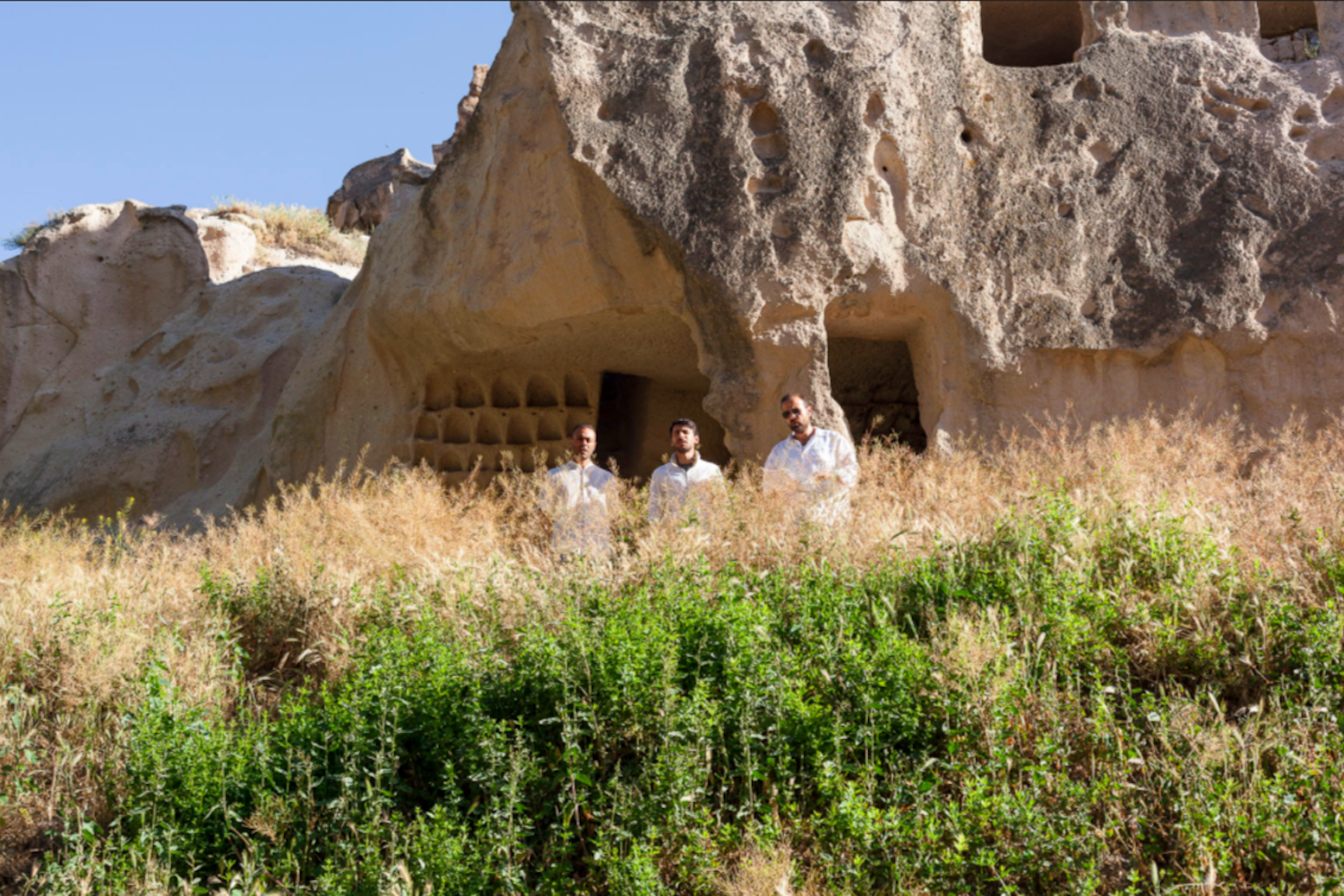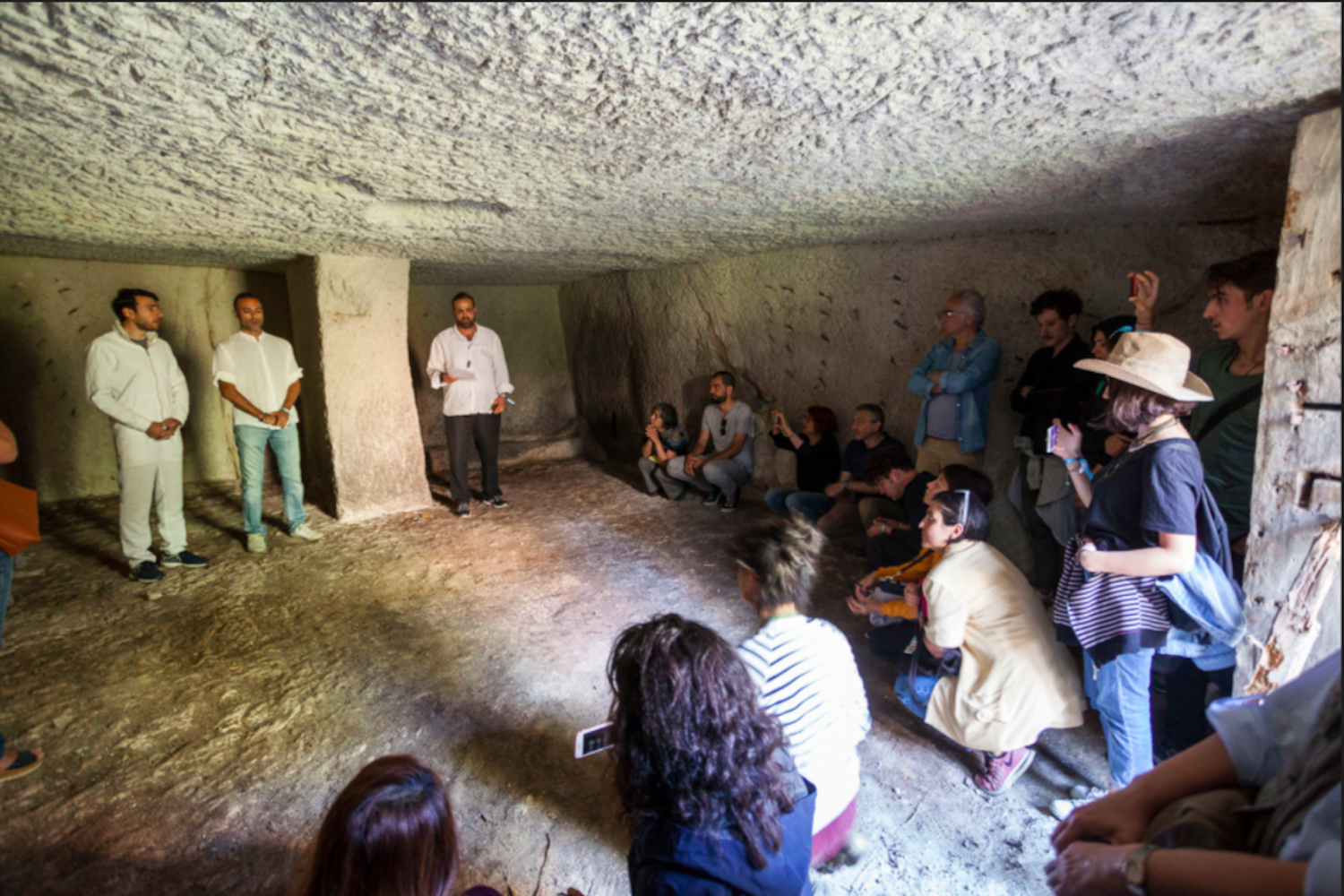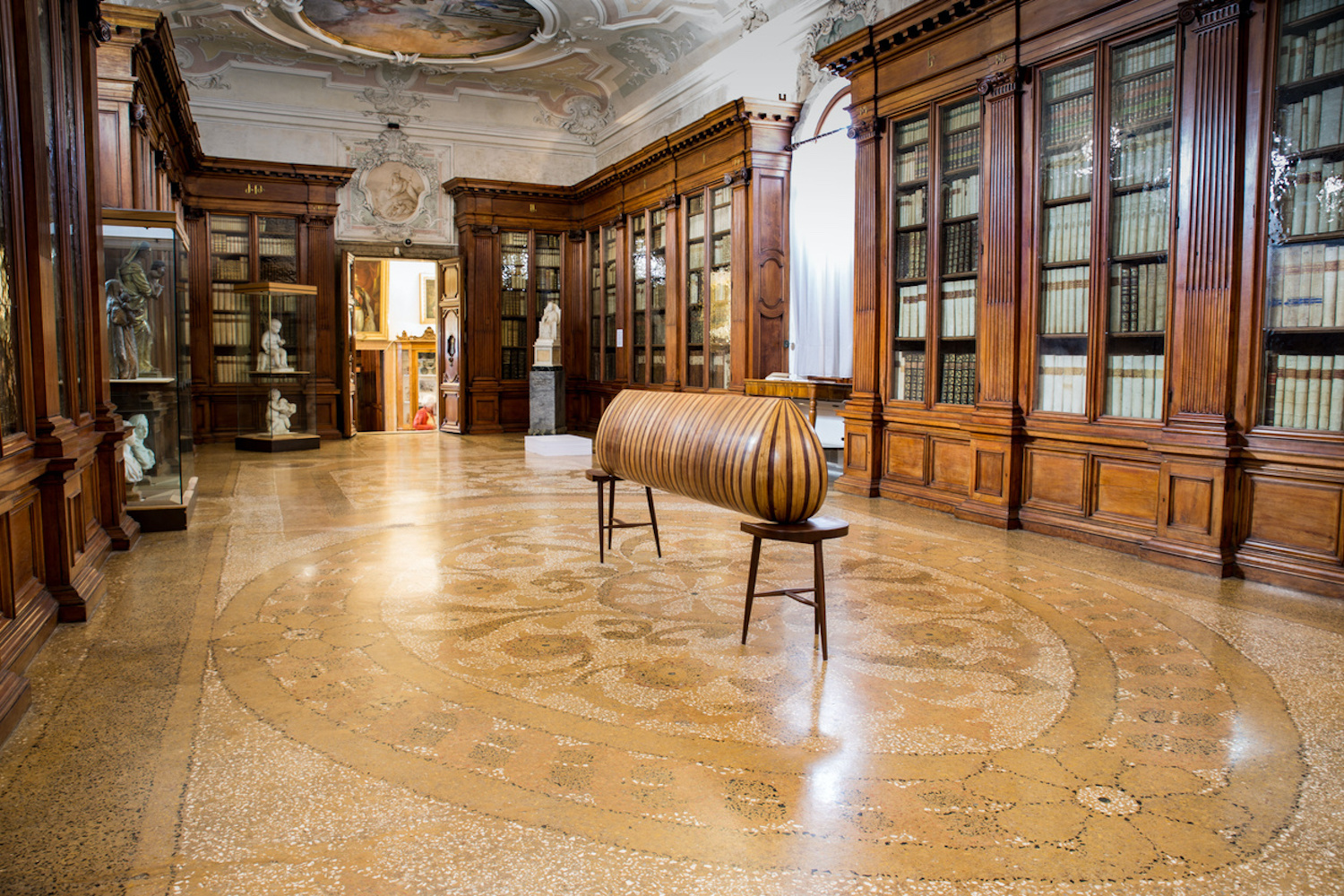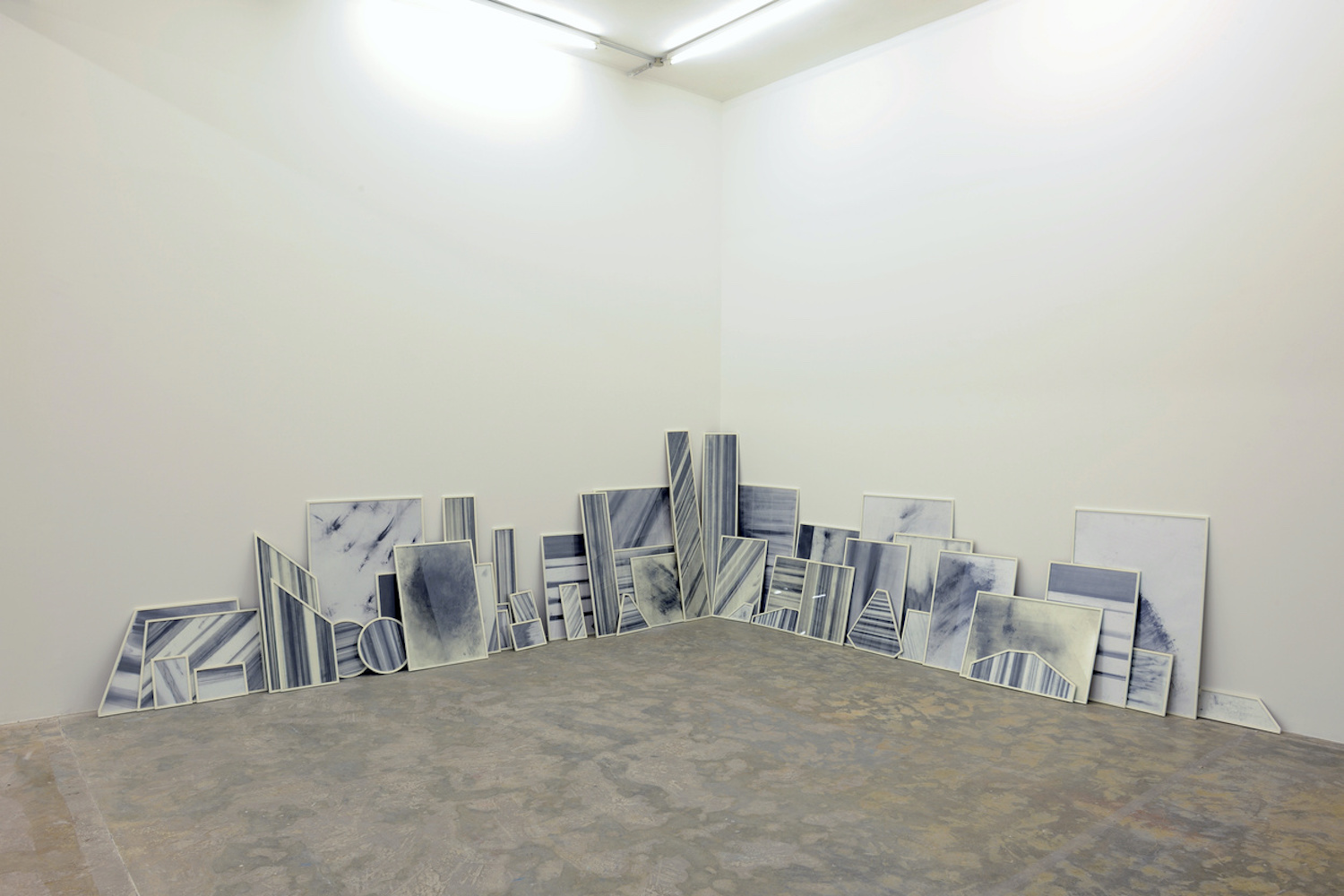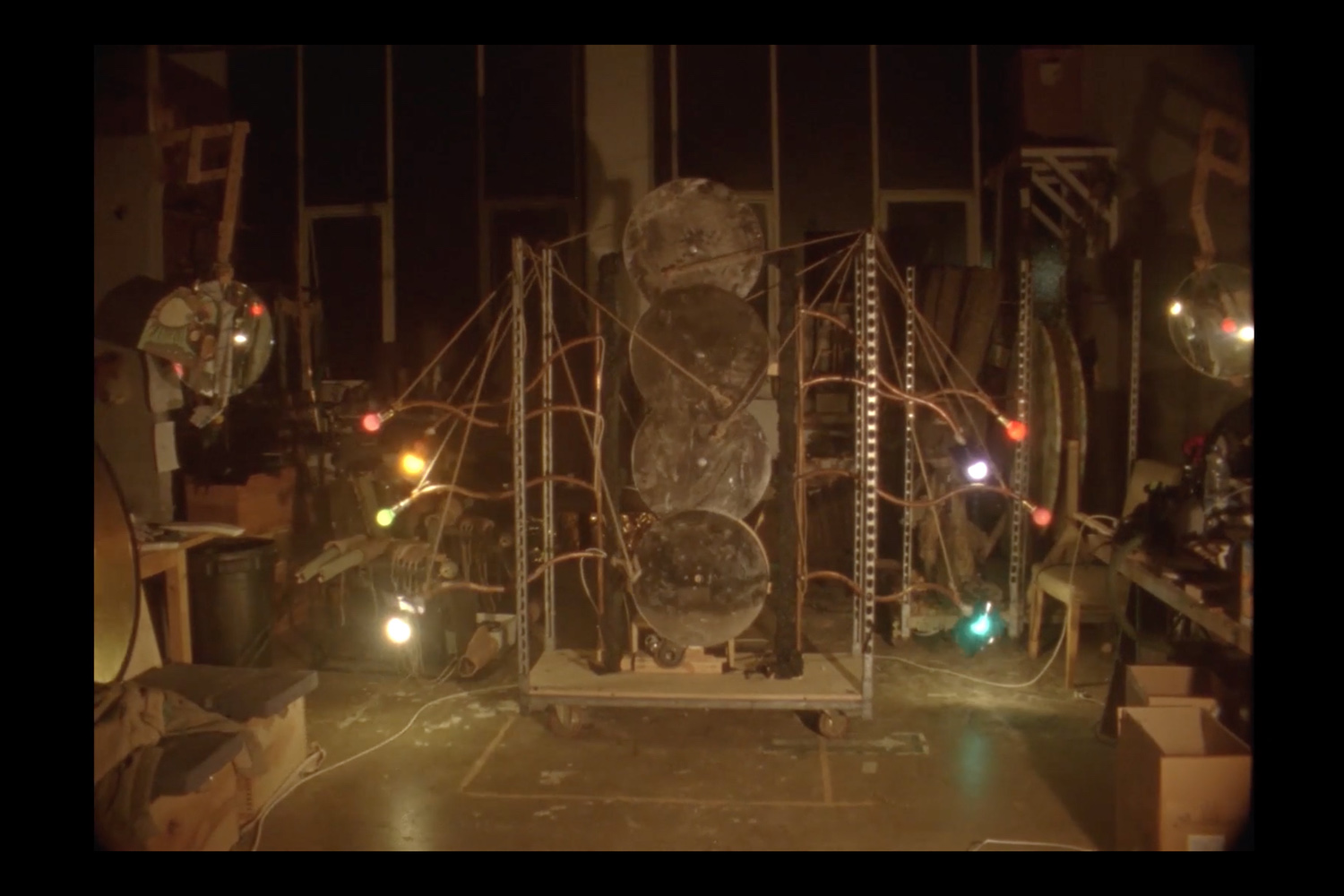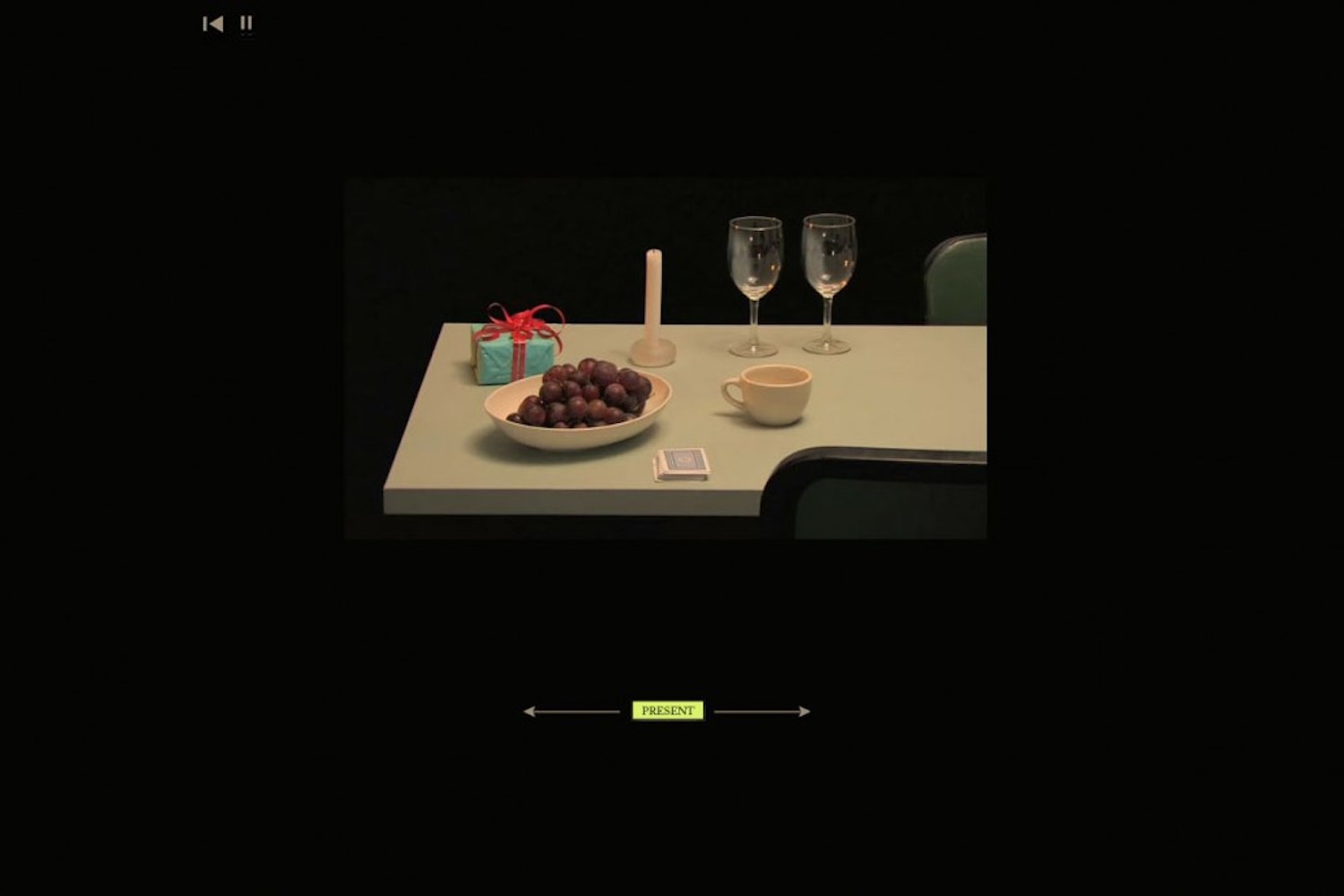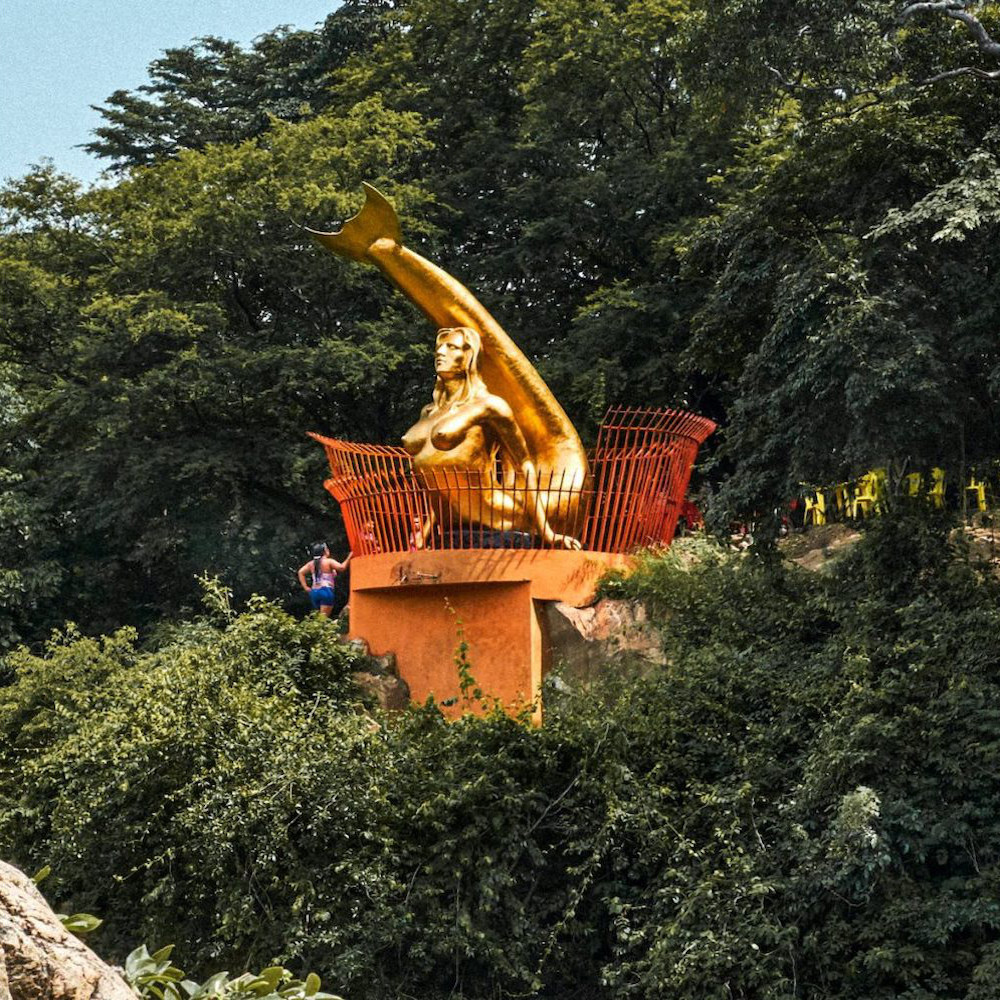“Listening In” is a column dedicated to sound, music, and listening practices in contemporary art and its spaces. This section focuses on how listening practices are being investigated and reconfigured by artists working across disciplines in the twenty-first century.
Gascia Ouzounian: Your work addresses themes of power and surveillance, and spans a range of media including sculpture, film, and installation. I’d like to ask about a subset of your work that deals with the politics of listening, and in particular the dynamics of ethnomusicology. What attracts you to the subject of ethnomusicology as an artist?
Haig Aivazian: One of the key things about the figure of the ethnomusicologist is that he’s not just a historian or recordist. He’s also actively shaping the very history that he’s supposedly objectively recording. The very act of pointing a microphone shapes the thing that is being recorded. It’s that contradiction which I think is the essence of modernity as a project: a kind of sick drive to preserve the very thing that modernity is instrumental in destroying, all the while also presenting itself as its savior.
GO: It seems like you’re particularly interested in the moment in which various cultures of the Near East are engaged in a project of modernization.
HA: I became interested in this figure in the context of the downfall of the Ottoman Empire — a large, ethnically mixed territory — in the moment when it becomes fragmented into nation-states. I’m fascinated by the mobilization of sound or music as a kind of primary tool for nation building, for building national identity around the act of listening.
All the different nation-states that are being created share the same impulse. An urban intellectual class, most often Westward looking, delves into its own folklore, goes to rural areas, and records musical practices that mostly accompany labor, mainly in the field — and then subjects them to contortions.
Cultures that were kept alive by workers, by women, by people who are unnamed, become reengineered, cleaned up if there are foreign words or modes that don’t quite “fit” into the modes that each nation selects as their own. This is what I mean by contortions: a kind of forced and systematized purification of these practices. Mixed, entangled folkloric practices become purified, segregated, deformed to fit into what is now a standardized and codified national repertoire, with clear rules, every undulation notated and neatly archived.
GO: That brings several of your works to mind. In To Be Human, O Mountain! (2018) you consider songs that were created in the field, the prison, and the church in Cappadocia. In a recent talk you drew a connection between those sites — the field, the prison, the church — as ones that equally shaped African American musical traditions. Are you drawing a parallel between these musical communities?
HA: It’s not an equivalence. There are particularities to these histories and to the ways in which these forms of violence and oppression were encoded into law in the different contexts. What drew me to make this parallel was that there’s a similar modern impulse, a similar nation-building drive. In the American context it’s once again ethnomusicologists who become concerned with authentic American culture when slavery is abolished and when fields are no longer officially sites of indentured labor. They realize that the field is a place where music is produced, and that that music is quintessentially American, regardless of what their view might be of the Black population. The abolition of slavery becomes a cause of anxiety: how to preserve these musical practices now that they are no longer contained in the field.
This is also where the ambiguity of the ethnomusicologist is the most apparent to me. There’s a kind of stereotyping that happens whereby ethnomusicologists are essentially looking for runaways: people on the run from the law. This stemmed from the belief that the real blues came from real hardship. So, the more ragged and haggard and tired the people they would come across would be, the more authentic they would view them as, because they would be expressing the most hardship and suffering.
The fact that ethnomusicologists were looking for runaways means that their mission and that of the police or the slave patrols were one and the same: they were all chasing after runaways. More often than not, the runaways would end up in prison, and as slavery turns into mass incarceration, so too does the prison take the place of the field as the main site of collecting Black music. These sorts of transactions of power constitute the core of these modernist projects.
GO: That resonates with your installation I am Sick, But I am Alive (2015–17). It’s inspired by Udi Hrant (1901–78), an Armenian Turkish oud master who often featured in a segment on Istanbul Radio dedicated to Turkish art music. You write that these broadcasts helped “shape a cultured Turkish citizenry around a collective act of listening” — but simultaneously how, in erecting Istanbul Radio, a vast Armenian cemetery was destroyed. I found it powerful that you exposed something about this nationalizing project, this musicalizing project — and the power dynamics inherent in that — by engaging with architectural histories, material cultures, sculpture, and form. This is also something you explore in Not Every Day Is Spring (2016).
HA: I was looking for sculptural forms that may embody these sometimes minute historical details, and the effects they might have on us, on our cities, on our realities, and on our bodies. Other times the shifts in musical standards were quite extreme. In Turkey there were state-organized campaigns of collecting instruments that were deemed to be quintessential traditional instruments. The state would go around and collect them because they came in different shapes and sizes. They would then replace them with a standardized version of the instrument.
So, there were actual physical contortions too. But for me there’s a more mystical aspect to it.
Things that are silenced never really go away. They remain in resonance and they can emerge at any moment. And whether we feel those things or not, they shape our sense of self, our sense of history, our sense of resistance.
Musical traditions are transmitted through time. They’re not things that anybody possesses. Like sound, they travel through bodies, materials, instruments, and architectures. So even if an architecture comes to bury something or covers something up, the reverberations of sound bounce across, travel through matter.
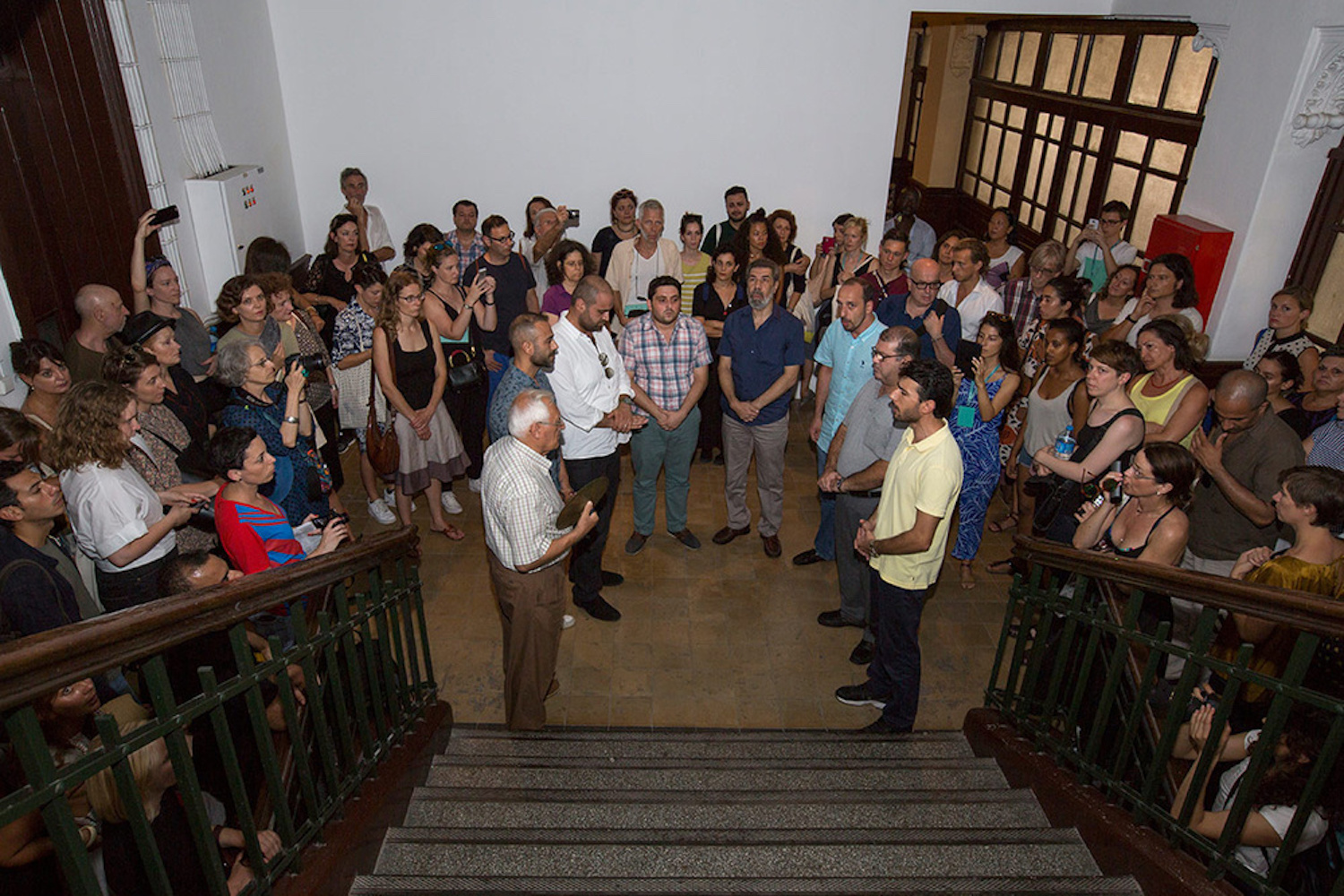
GO: It makes me think of the male choir that sings in the Armenian monophonic liturgical tradition in Wavy, Wavy is the Sea, Momma (2015). There’s something so powerful in hearing those modes and those tunings. It’s expressing something not just about those people and their experiences, but also about the land and the landscape. I can almost hear that materiality in their voice, in their sound, and in the shape of the melody. Is that something that you’re thinking about in terms of sculpture — those shapes, too?
HA: Yes, totally. This idea of transmission and shaping, it’s not just human-to-human. It’s something that spans the whole spectrum of life and nonlife. It shapes architecture and landscape. It shapes the ways in which we use our throats, our mouths, our heads, and how we project sound and from where.
As part of the Armenians’ drive to modernize, the vast majority of Armenian liturgy shifted to Western notation, and they gave up the monodic practice and turned toward a polyphonic practice. This particular church in Beyoglu has maintained this monodic practice, not by reverting back to the ancient numenical notes, but by using the Ottoman makams and applying them to the Armenian liturgy. It’s this hybrid practice, but it’s also a totally organic and native way of practicing music.
So, this native, authentic practice — all these key words that constitute a value system for modernity — are present in this practice. But at the same time if you look at it through the scope of the nation-state, it’s this bastard child that belongs to no one tradition. It’s traces of those bastard formations that I’m looking for, because they’re the ones that speak to me.
GO: That also seems to be the case with Udi Hrant.
HA: Udi Hrant was the starting point of this whole project. When I listened to Armenian music it was something that, for me, should have sounded more Middle Eastern, so to speak, but everything I was hearing was sung in these operatic, heady voices. I didn’t know the history of those contortions — for example, farming music sung in falsetto — but something about that music was “off” to me.
When I heard Udi Hrant singing using guttural and nasal embellishments — he sang in Turkish, but there’s a track where he suddenly switches into Armenian — it was this uncanny moment of “What is this I am hearing?” And at the same time, “This is clearly what this music should sound like.” This is how I always unknowingly imagined it sounding. My ear had instinctively identified this contortion in Armenian music.
My interest is not to say that what we perceive as Turkish culture is actually ours or theirs or whoever’s. It’s not about laying claim to something. It’s about dismantling these neat co-options or claims over what can only be unruly, messy, and untamable. I’m interested in the moment before cultures become museified or frozen or put to sleep. I want to listen for the hum that disturbs this sleep. This interest is not a solely historical task. It is an exercise in listening for contemporary echoes, of continuing resistances to age-old, oppressive apparatuses.

